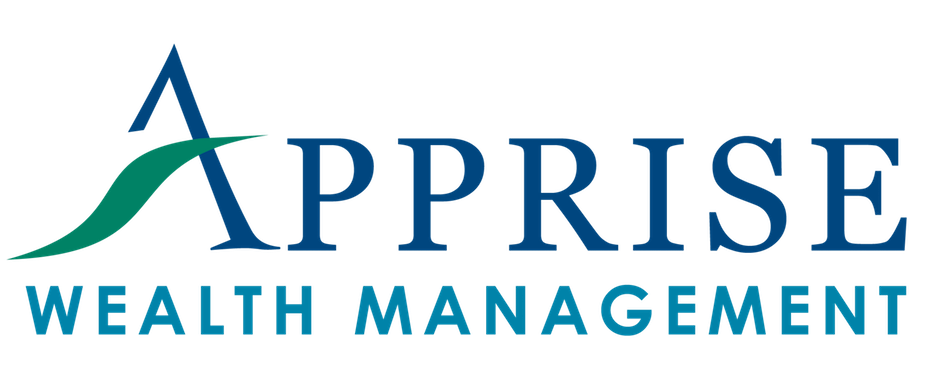We hope everyone’s New Year has started well. May 2024 be a wonderful year for all.
Before getting to the opening essay in this week’s blog, I would like to welcome those of you who have not received Apprise’s weekly blog in the past. As announced yesterday, Apprise Wealth Management and Kopka Financial have merged. This represents the first blog sent by the combined firm.
For those who have not received Apprise’s blog before, we’d like to share the typical schedule. We send our blog on Tuesday mornings. This week we share our five favorite reads. Next week will be our long-form blog highlighting a topic for women facing new beginnings. We follow that up with our “Tuesday Tips” video. Then we repeat the cycle. We hope you find our content educational, informative, and interesting.
Use KPIs to Achieve Your New Year’s Resolutions
According to Forbes, improving fitness (48%), finances (38%), and mental health (36%) are the top New Year’s resolutions for 2024. Older adults (ages 78 and above) cited mental health as their main focus.
Unfortunately, Forbes also found that the odds of folks achieving those goals are low. The average New Year’s Resolution only lasts four months. Approximately 1% of all resolutions make it through an entire year. Even worse, of that 1%, only 6% manage to stick to their resolutions going forward.
Most experts agree that the big reason folks struggle with resolutions is you can’t just “improve your fitness.” As an alternative, you can develop key performance indicators (KPIs) that you execute daily and track over time. This can help you progress toward a better Return on Life and living your life plan.
So instead of making resolutions, try this three-step process to develop your own 2024 KPIs.
1. Set goals that matter.
Copying a social media trend or your best friend’s resolutions is a surefire way to set yourself up for failure. The goals you follow through on tend to be those aligned with your passions, interests, and values in personal ways. Effective goals also tend to be more positive than negative. Rather than resolving to “fix” something you feel is wrong in your life, set a goal that will promote self-improvement and growth.
For example, resolving to pay down your credit card debt might make you feel bad about how you’ve spent your money in the past. What if you set a goal of sticking to a new monthly budget? This budget can combine responsible spending limits with debt payments instead. It can also make you feel empowered. Plus, you can enjoy your money as you simultaneously develop better financial habits.
2. Establish KPIs.
In business, a KPI is a number that represents a company’s performance in important areas, like revenue growth or customer acquisitions. But the absolute best companies distinguish between two types of KPIs. KPIs that measure past performance represent “lagging indicators.” KPIs that drive future progress represent “leading indicators.”
Try focusing on KPIs that are going to lead you towards your goals. For example, if you want to eat healthier in 2024, you might start tracking your daily meals. But what you ate yesterday is in the past – and looking back on a “cheat day” might leave you feeling discouraged. You could plan out your next three days of meals and check off the related items on your shopping list. This type of KPI can get you headed in the right direction.
Effective KPIs also tend to represent small and specific steps toward a bigger goal. If a company wants to increase annual sales by 5X, it will break that big annual goal down into smaller weekly, monthly, and quarterly sales goals. This makes it easier to track and manage KPIs. You can use a similar strategy to start saving for the house you want to buy in the next three years. This strategy can also help you gradually build up your endurance for the big bike ride you want to take next summer.
3. Clear your obstacles.
Setting goals and resolutions can get us excited about the end we’re going to achieve. But we may also overlook all the obstacles that could get in our way.
So, what could interrupt your best-laid plans and keep you from realizing your best intentions? How are you planning to get around those obstacles?
If rushing the kids out the door makes your mornings crazy enough already, getting up early to run might not be as realistic as exercising over lunch.
Speaking of lunch, if you think you’ll walk right past the smoothie-and-salad shop to your favorite greasy spoon diner, consider brown-bagging at least three days every week.
Monitoring KPIs and preparing for obstacles is also a key element of our Life Planning Process. We strive to help you identify your obstacles as well as what you can do to overcome them.
We hope that setting goals that matter, establishing KPIs, and clearing your obstacles can help you achieve your New Year’s Resolutions.
Our Life Planning process can help you create a spending plan that fits with the rest of your financial goals and sets you up to start 2024 on the right foot. It can help you better balance your spending with what matters most to you. Let’s schedule a year-in-preview meeting to get focused on the metrics and goals that will help you live the best life possible with the money you have in 2024. If we’re not working together yet, and you would like to get started, schedule an introductory call.
This Week’s Favorite Reads
In this week’s favorite reads, we highlight topics that can help you get your New Year off to a good start. The first article discusses what’s changing for retirement this year. We also have some tips to help you keep following new habits. I also enjoyed the “fake” quotes in the third article. They serve as a reminder to focus on the long-term rather than the short-term when it comes to investing and living our lives.
Here are the links to this week’s articles as well as a brief description of each:
1. What’s Changing for Retirement in 2024?
When it comes to tax laws and their impact on retirement planning, the only constant is change. This article shares some of the key retirement-related changes to pay attention to in 2024. It also highlights some planning-related moves to consider. Inflation does have some positives. It leads to increased income limits for tax brackets. The contribution limits for savers in company retirement plans, IRAs/Roth IRAs, and HSAs also increased. Effective this year, with limitations, you can rollover unused 529 assets to a Roth IRA.
2. The New Science on Making Healthy Habits Stick.
When we make New Year’s Resolutions, we typically want to change our habits. We often have good intentions. But as discussed in the opening of this week’s blog, we often fail to follow through. Creating KPIs can help. This article shares some of the best science-backed strategies that can help you build healthy habits more efficiently. What’s a good place to start? Try identifying simple habits that you can easily repeat.
3. Long-Term News.
How often do you look at the market’s performance? Does daily performance matter? Do we even know what causes it? In this article, Morgan Housel suggests some more meaningful headlines than what we typically read or hear from financial pundits. Which matters more to a 24-year-old, the day-to-day movement of a stock index or depositing money into a Roth IRA? Unfortunately, none of the quotes in the article are real. If they were, we would likely find ourselves better prepared for retirement. Our investment accounts would probably have bigger balances, too.
4. Reasons to Get Outside and Move Around During Your Workday.
We know going outside is good for us. But none of us do it often enough. I admit that I’m guilty of not getting enough fresh air during the week, too. On the weekends, I change my exercise routine and make sure I go outdoors. During the workday, we often focus on working through the day. Why? We think it will make us more productive, efficient, and accomplished. But stepping outside can benefit our emotional, mental, and physical needs. It can also boost long-run productivity. Check out the article to find out why. You will also find some suggested ways to step away from your desk and get outside.
5. Ed Slott: Roth Conversions Especially Attractive Before 2026.
In 2024, Apprise helped clients complete more Roth conversions than in any prior year. I expect this trend will continue at least through 2025. The current tax rate system expires at the end of 2025. Absent new legislation, we will revert to the prior tax regime in 2026. While it might not come to that, it seems unlikely that rates will be lower in 2026 than they are today. I admit that my crystal ball remains both cloudy and cracked. But, if I were forced to opine on the direction of future tax rates, I would lean toward higher rather than lower rates. To better manage your lifetime tax rate, a series of phased conversions could make sense. While this interview with Mr. Slott was published in December, the logic still applies. Another thing to consider is that Roth conversions can help you, your surviving spouse, and your heirs.
Our practice continues to benefit from referrals from our clients and friends. Thank you for your trust and confidence.
If you would like to talk to us about financial topics including your investments, creating your life plan, saving for college, or saving for retirement, please complete our contact form or schedule a call or a virtual meeting via Zoom. We will be in touch.
Follow us:
Please note. We post information about articles we think can help you make better money-related decisions on LinkedIn and Facebook.
For firm disclosures, see here: https://apprisewealth.com/disclosures/





